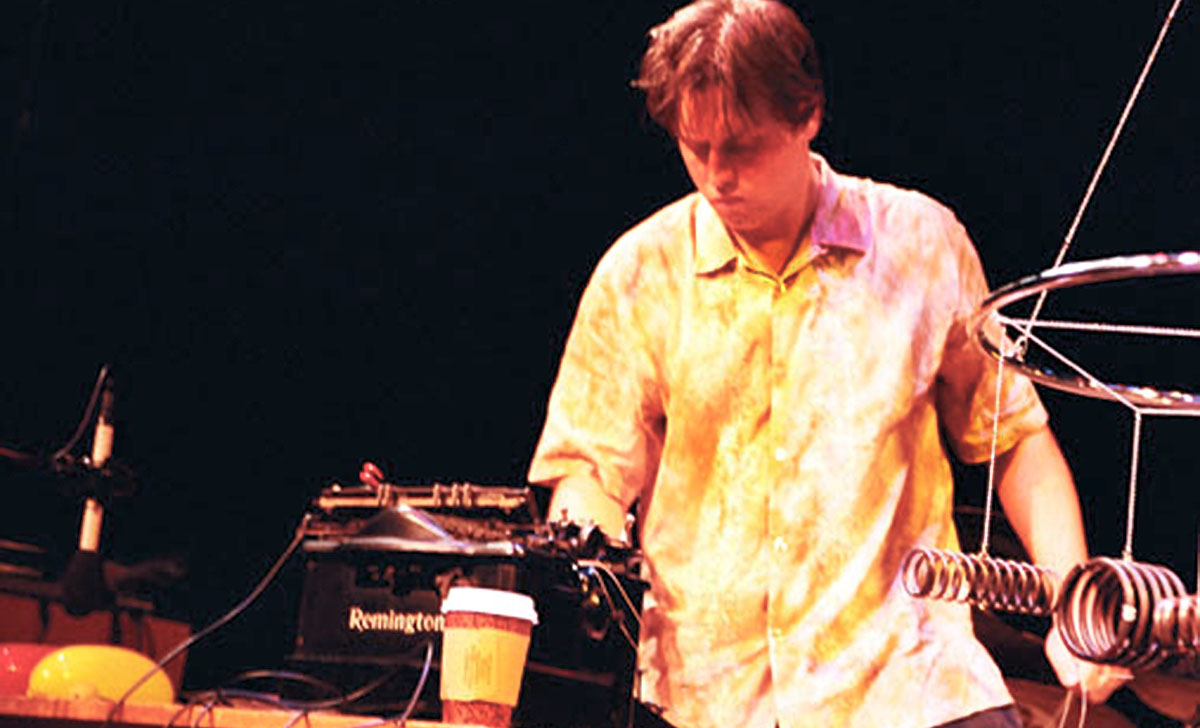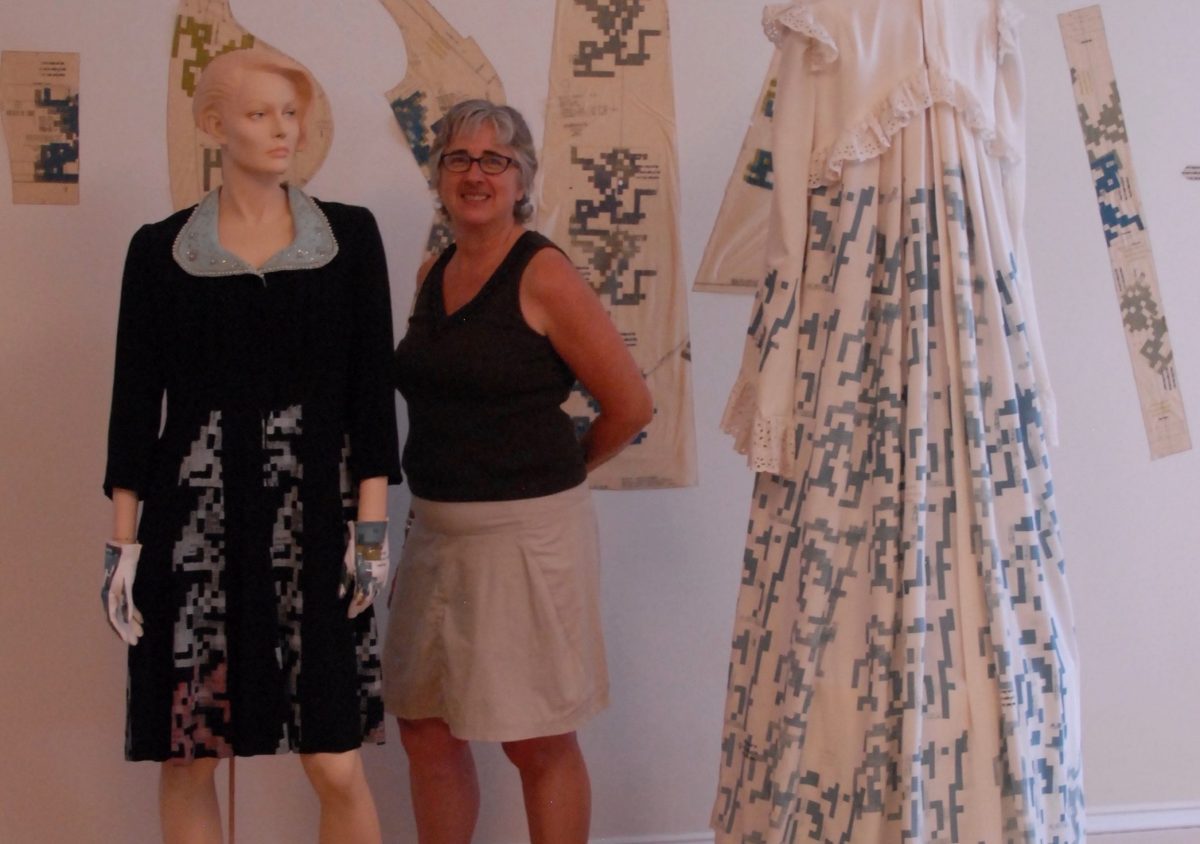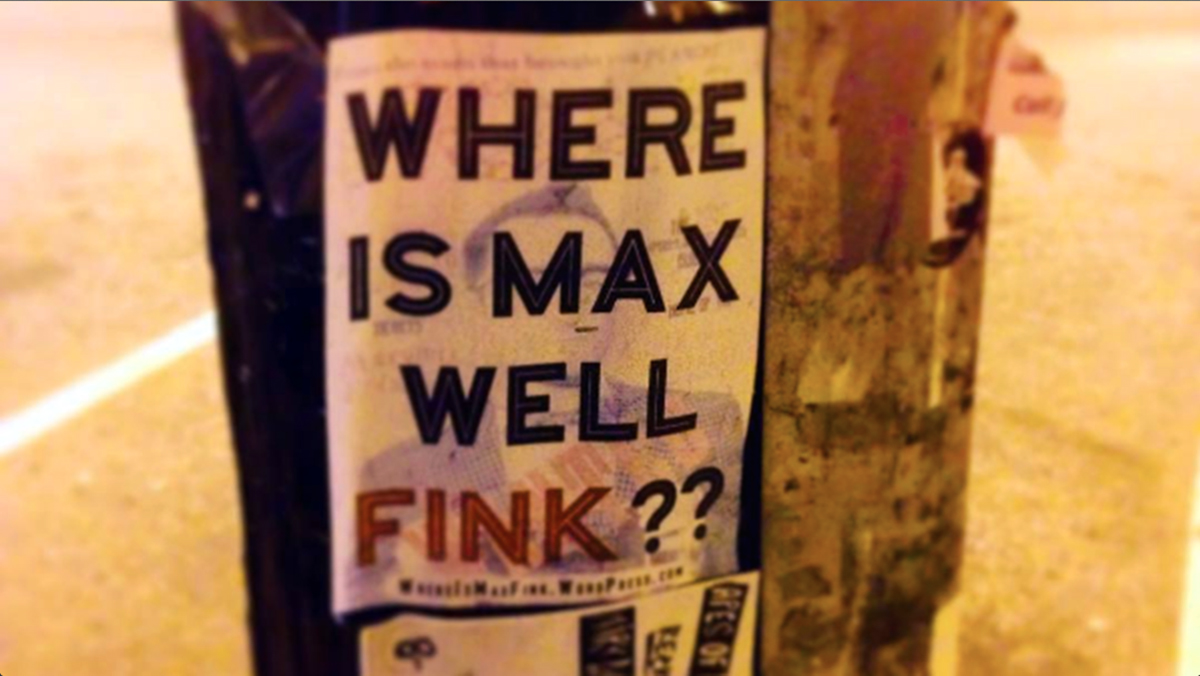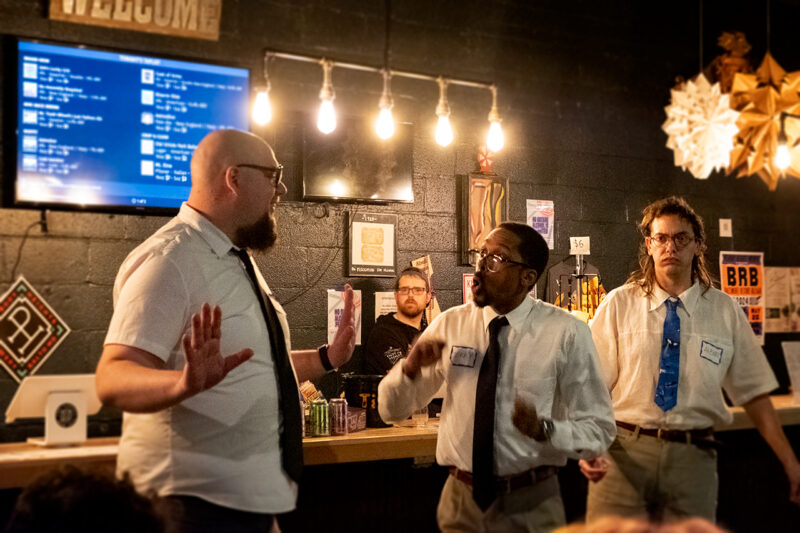Maxwell Fink’s Hoax Theatrical Magic Show
by Sage Viscovi
To outsmart a criminal, you first must think like them. That is the mantra under which professional actor and magician, Brian M. Kehoe, lives by… otherwise known by his crafty con artist alter ego, Maxwell Fink.
A graduate of Nazareth College’s theatre arts program and performer with over 20 years experience, Kehoe also finds time to work as a teacher, consultant, sound designer, and arts administrator for both the Baltimore Chamber Orchestra and Baltimore School for the Arts. His most recent project as Fink (in collaboration with director Annelise Montone under the name “Sarah Swanson”) is titled Hoax, blending daring magic tricks with experimental comedy to create a show that keeps your feet planted on the ground and heart pounding in your chest.
The goal? To transform ex-cons into do-gooders through exposing the biggest scammers in history (himself included).
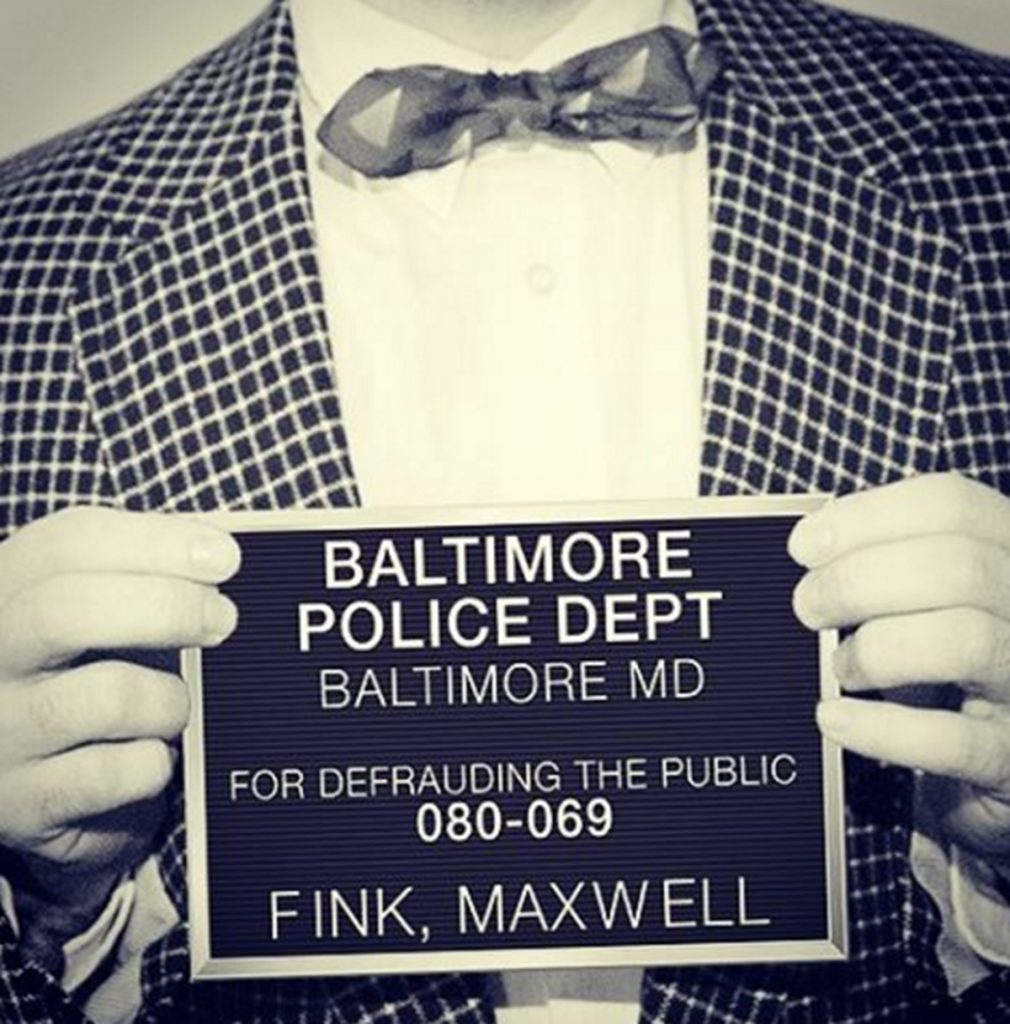
Tucked away in the dim, underground speakeasy that is the 14Karat Cabaret within the Maryland Art Place, audience members sport Mad Men inspired attire (a required dress code in order to attend) as smooth jazz sounds in the background. I felt both under and over dressed: under once I arrived and became self-conscious at everyone else’s more accurate outfits, and over walking through the streets from the Circulator stop a few blocks down. It felt like I was living in a film student’s fantasy, sitting alone at one of the bar tables surrounded by all of the quirky décor.
As the small room filled up, suddenly a radio safety announcement came on jokingly describing a potential nuclear holocaust and reminding the audience of the “duck and cover” technique. And then, Fink appeared amongst the standing audience, and for some reason I imagined him being much taller. He paced the bar area while going into a detailed monologue about how he has “repented” and met the Devil himself, slowly selecting participants to join in a game. Without looking, he allowed each participant to randomly select a colored ball from a bag – one of which was the golden “ball of truth”, which indicated that the person possessing it was telling the truth while the other three were liars.
Fink then asked them a series of yes or no questions:
• “Are you married?”
• “Do you have any children?”
• “Do you own at least one cat?”
• “Have you ever broken a bone?”
• “Is your favorite color green?”
All of the participants answered in unison, and somehow from this information Fink was able to correctly identify the truth teller from the bunch.
Making the way to the seated area, the audience was exposed to a large wheel marked with several keywords. Fink took his first spin of the wheel, landing on the word “fire”. He then brought out Swanson on a rolling cart, and began to tell the story of Mary Toft – an English woman who in 1726 became the subject of considerable controversy when she tricked doctors into believing that she had given birth to rabbits. Fink then began pulling clumps of fur and a paper chain of bunnies from Swanson’s womb, with lots of screaming and fake blood involved. What a way to start!
For their next trick, Swanson delivered an array of metal objects to Fink – from which she selected a 7-inch steel hat pin. Fink then proceeded to push the pin through his arm; even going so far to prove it was in by letting out some blood onto the floor! At this point, I was equal parts sickened and
enthralled.
 Fink (left) and Swanson (right) preparing to puncture Fink’s arm
Fink (left) and Swanson (right) preparing to puncture Fink’s arm
After the dangerous trick, Fink finally took the time to formally introduce Swanson as his assistant, saying a lot about their fictional relationship. What exactly was their relationship? Were they friends? Former lovers? Just business partners? This was never officially explained in the production… perhaps I needed to see a previous collaborative performance by the duo to understand the extent of their obvious mutual soreness towards each other.
A volunteer was then brought onstage for a test – can the mere sight of a beautiful woman stop a man’s heart from beating? The volunteer was asked to check Fink’s pulse, and tap along so the audience could hear. Once Fink caught eye of Swanson, however, his pulse ceased entirely.
The segment ends, and Fink takes another spin at the wheel landing on “blind”. As he goes into verbally illustrating his past moneymaking schemes, police sirens can be heard overhead, much to Swanson’s disdain. He briefly elaborated on the crimes of the infamous Soapy Smith, who would con people into buying his soaps by claiming to place various sums of money in each package. Two new volunteers are brought up, and he proposes a card game: one person chooses red pairs, one black, and Fink picks one of each color. Whoever has the most pairs of cards by the end of the deck wins $52, but of course Fink wins both rounds of the game. Then, after a brief scuffle between Fink and Swanson, she angrily declares that they will take a break and bolts offstage.
So far this probably sounds like a lot, and believe me: it was. I wasn’t sure what just happened to be quite frank, but not in a bad way! I was curious, eager to see what would happen next. It’s possible I might’ve already been fooled, who knows?
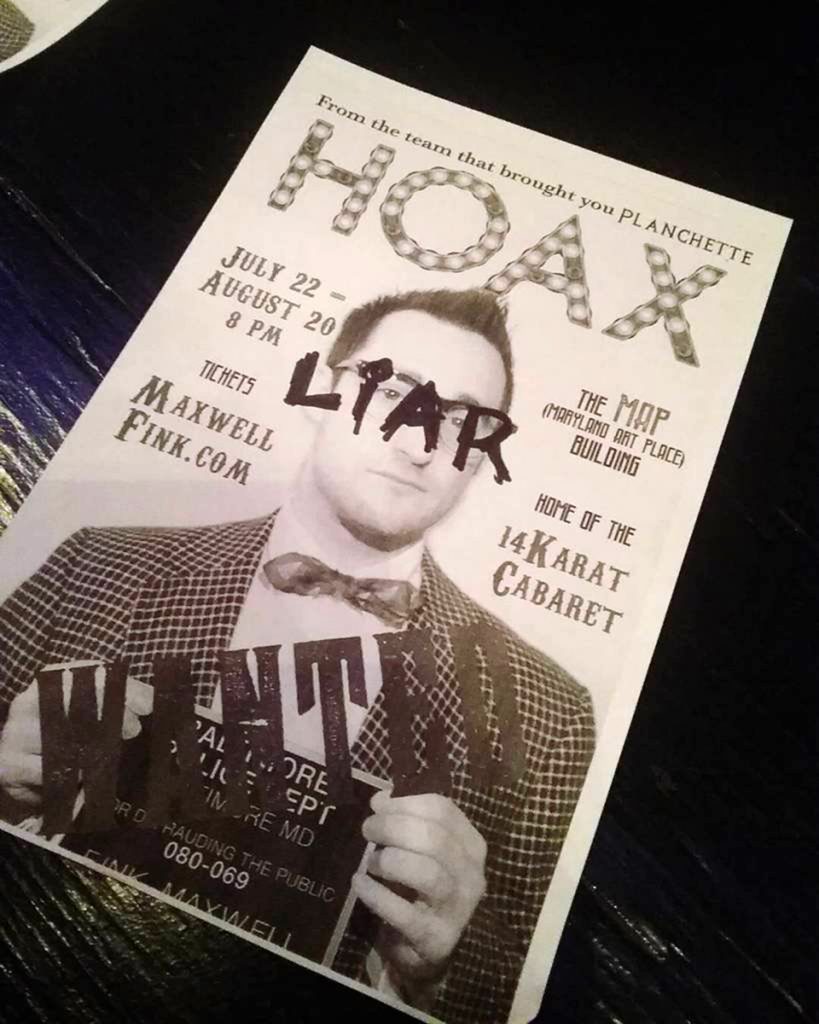
The second act began with a possibly intoxicated Fink, wielding a glass of scotch. He spins the wheel and it lands on “monster”. I started to wonder: is the wheel controlled, or does the outcome of the show depend on what words the wheel stops on? I have a feeling it’s the former. If it were the latter, however, that would be truly phenomenal because then the plot would have to differ each night and the two actors would have to improvise around that notion. Take notes, Fink – that might be a concept worth exploring!
He then breaks out a lighter and transforms a flame into an ice cube, which he then drops in his glass. Another volunteer is brought up to lift a table with ease, but once Fink locks the volunteer’s keys within the box atop the table… he struggles to get it off the floor, the box appearing to “steal his strength”. Swanson, entirely aggravated at this point, leaves the stage and sits in the back of the audience, occasionally making rude remarks and mocking Fink as he continues to drink.
Fink spins the wheel again: it lands on “danger”. Without an assistant, Fink brings a pretty blonde onstage who he humorously dubs “New Sarah”. Psyching the audience out with levitating cloths and melting spoons, the mood became uneasy and tense, like I was experiencing a real-life fever dream.
I became scared once Fink brought out four “Quackenbush Funeral Home” chairs; the show had reached its peak of being sinister. Bringing two more volunteers up, Fink writes “False Prophet” on a small chalkboard and flips it to reveal “Too Late M.F.” scribed on the opposite side. He then asks the volunteers to bind his thumbs and then blindfolds them, telling them “do not panic” as he removes his thumbs and begins to mess with them in front of everyone. He tricks them with scents and lifting the table in front of them to make them believe there are spirits in the room – demonstrating that he himself is a false prophet, a.k.a. still as much of a sinner as he ever was.
He spins the wheel one last time: “monster” again. Now things were starting to make sense, his true nature finally showing through his lies.
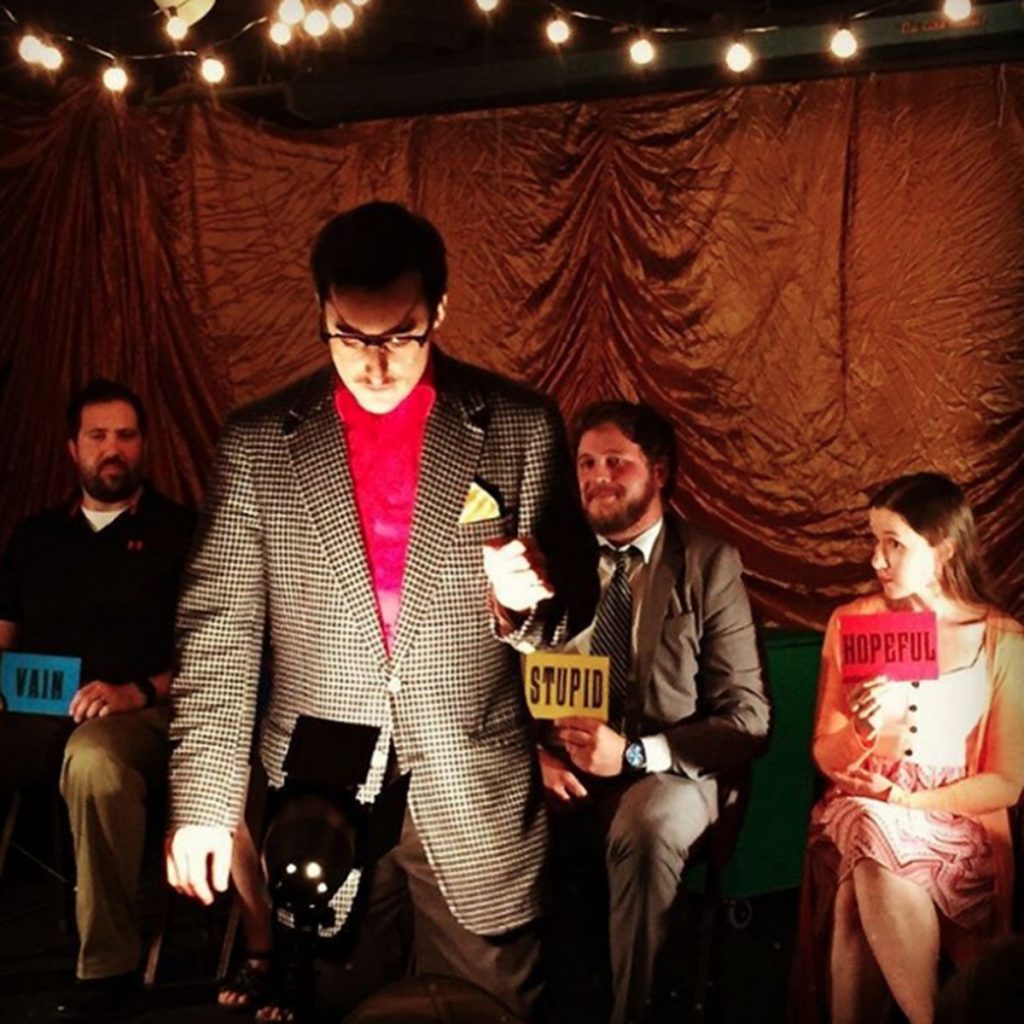 Fink onstage with his volunteers
Fink onstage with his volunteers
For this act, he brings four last volunteers onstage to sit in the chairs and asks: “Can fate be changed?” This is his last cry for redemption, and this trick determines whether or not his soul will be saved. If he is really bad, he will win the game. He asks one volunteer to shuffle four black envelopes, and then hand them back to him. He distributes the envelopes, and asks each person to reveal the colored card inside – each with a word that describes their biggest flaw. He then asks them to reveal the card under each of their seats, and each volunteer’s card matches the one in their hand, proving Fink to be truly bad after all.
Defeated, he asks “New Sarah” for her real name. For his last game, he asks her to simply take a black ball and put it in one of her hands behind her back. He guesses the wrong hand and smiles, and Swanson returns to the stage. Fink pulls out one final envelope that reveals his fate, to which Swanson protests saying he doesn’t have to do this. She hands him a drink, to which he takes a swig and begins stumbling and coughing – apparently poisoned. He professes once more that the sight of her has made his heart stop beating, and stumbles offstage dropping the envelope. Swanson picks it up, and she is upset to see that it is blank. She opens up a large title card with the words “Better Luck Next Time” and leaves.

This, sadly, will be my last article for BmoreArt for quite some time due to me moving back to Long Island. I spoke with a young man during the intermission curious about my writing practice. One of the questions he asked me was what I liked about the theatre scene in Baltimore that I couldn’t get from going to a play here in New York.
For me, there is something more personal about theatre in Baltimore. Typically, most people would associate “New York theatre” with Broadway musicals and plays, not accounting for any small-scale productions. Broadway is also heavily scripted and over-the-top, relying on dramatic effects and transitions, choreographed dance numbers, and rapid-fire costume changes to make a show stand out in a cutthroat industry.
Baltimore’s theatre is more experimental and intimate, a lot of the time run by volunteers or a small board of directors. Playwrights here reach outside of the box for plotlines, whereas plays that have gained popularity in New York tend to have a lot of similar themes. And if I have to endure one more play about “moving-to-the-big-city-to-become-a-star”, then I swear to LuPone: I’m escaping to the moon (looking at you, 42nd Street and Thoroughly Modern Millie!).
So thank you, Baltimore, for giving me the chance to experience all your theatrical oddities and convince me that a show can be great without the need for sequins, stunts, and fog machines.
Maxwell Fink might’ve made a hoax, but my enjoyment sure wasn’t!
HOAX Teaser from the encounter on Vimeo.
*****
Maxwell Fink’s Hoax will be back this November for Charm City Fringe Festival!
Maxwell Fink information: Website – Facebook
Author Sage Viscovi is a recent MICA graduate and theater critic for BmoreArt.
Photos by The Encounter, Rob Vary, and Kel Millionie
